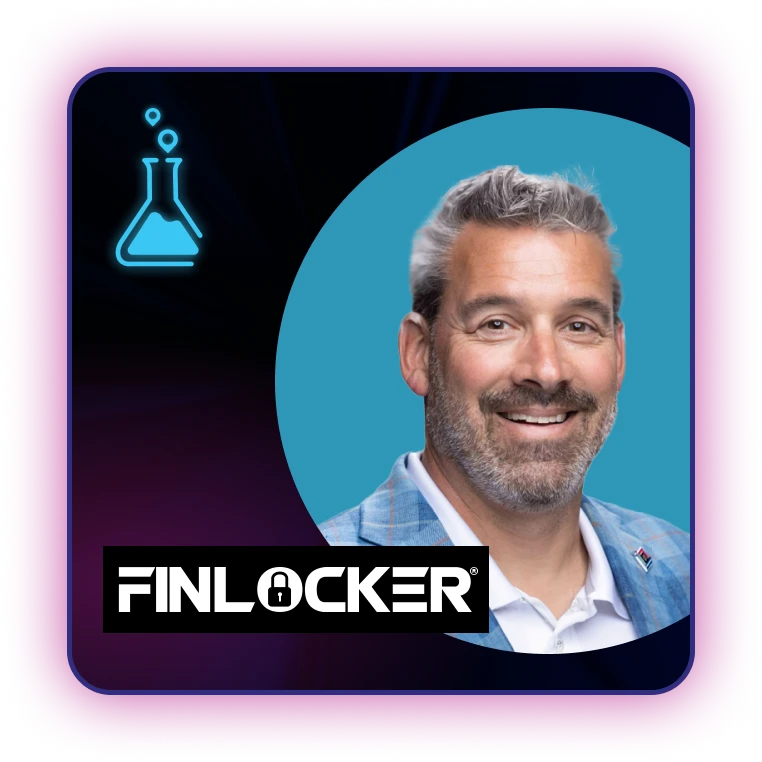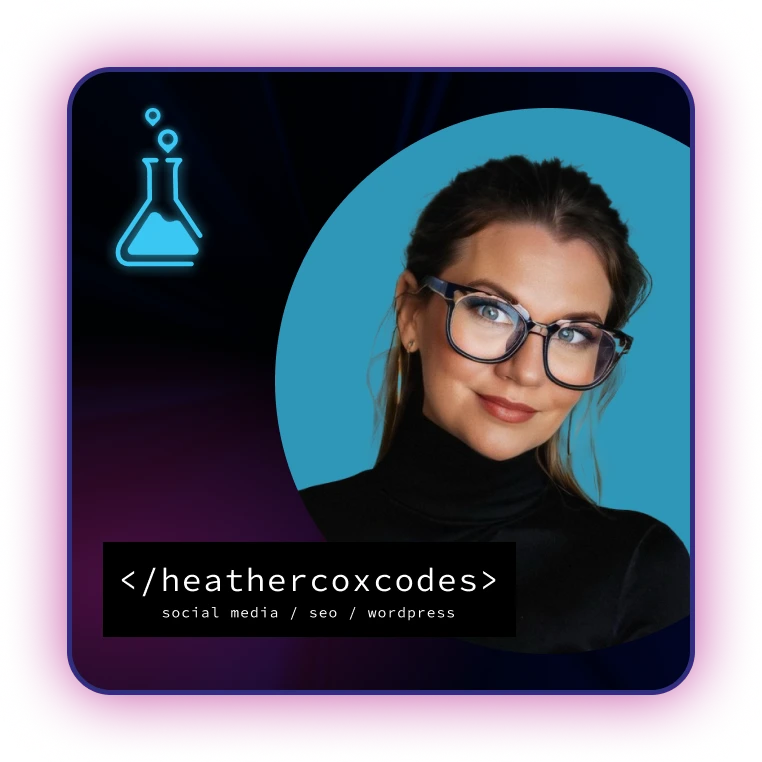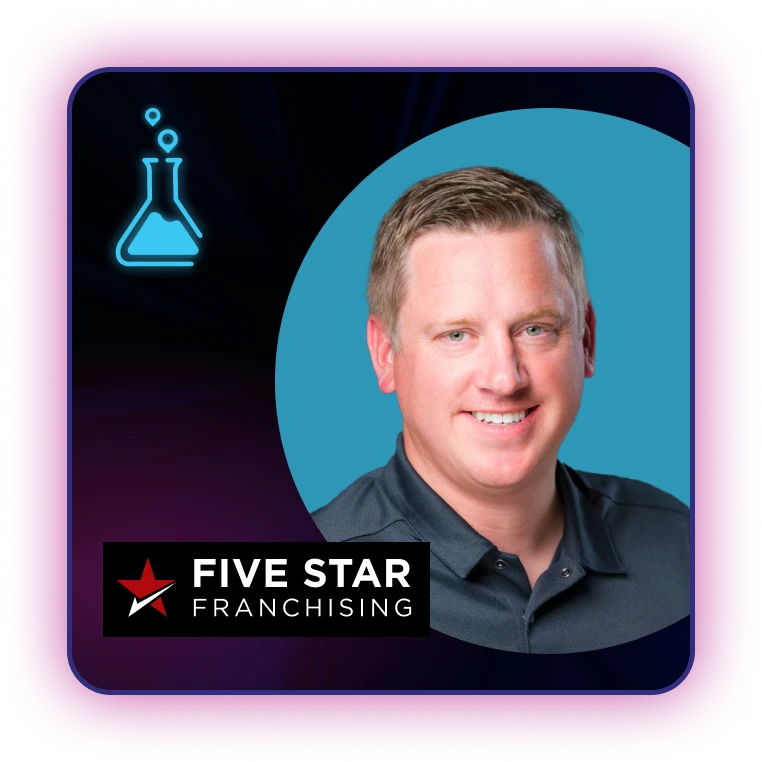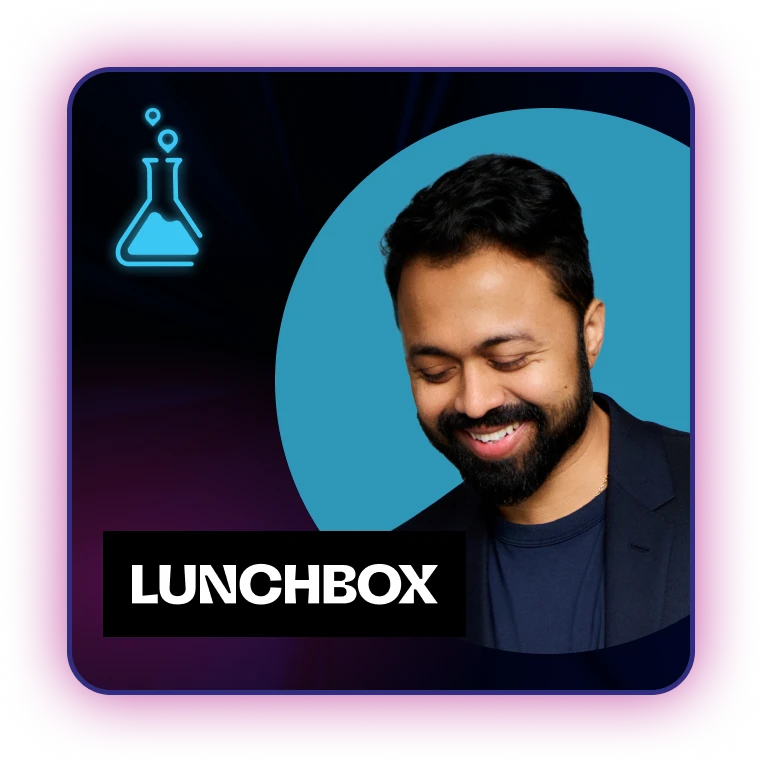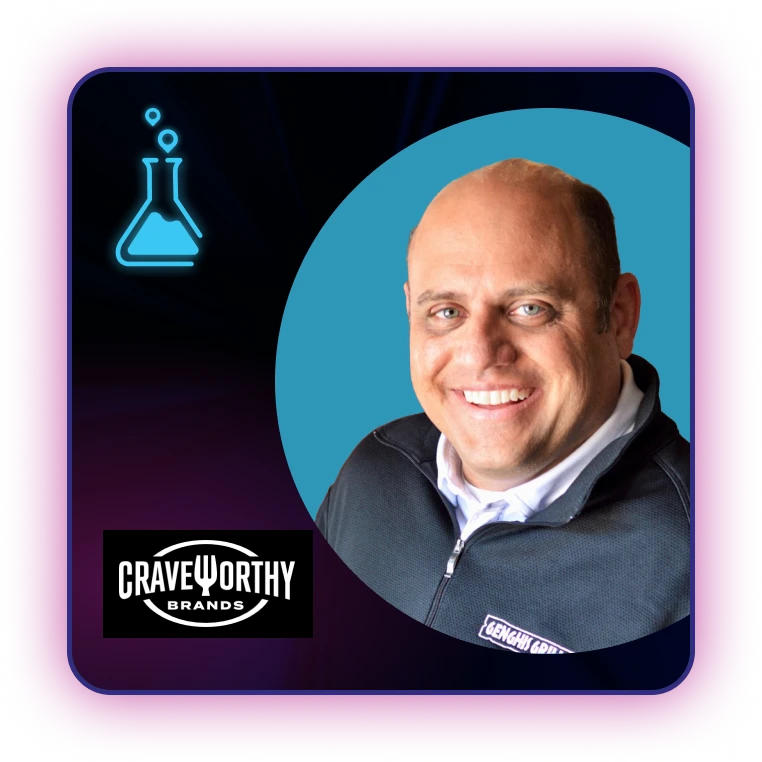< All episodes

March 6, 2024
The art and science of restaurant pricing
with Ashwin Kamlani
Co-Founder & CEO at JUICER
Summary
In this episode of the Local Marketing Lab, we go behind the scenes with Ashwin Kamlani, the revolutionary co-founder of JUICER, to uncover game-changing insights around the art and science of restaurant pricing. Learn how adopting a data-driven pricing strategy powered by location-based competitive intelligence enables restaurants to make smarter decisions that drive higher revenue. We dive into how JUICER leverages advanced technology to provide customized analysis and pricing recommendations tailored to each restaurant’s local market trends and individual menu dynamics.
Data-driven pricing strategies. To stay competitive in the digital era, companies must go beyond traditional pricing methods and adopt a more data-driven approach. Leveraging technology and analyzing data can help businesses make informed pricing decisions and adapt to shifting market conditions. As demonstrated by JUICER, a data-driven pricing strategy based on local market trends can help businesses increase revenue and maximize their efficiency.
Competitive intelligence for pricing analysis. We learn how JUICER helps restaurants stay on top of the competition by tracking real-time promotions, analyzing specials and bundles, and providing actionable competitive intelligence on a hyper-local level.
Brand authenticity through storytelling. Storytelling is a powerful tool that brands can harness to build trust and foster a stronger connection with their audience. By bravely sharing their journey, including their highs and lows, brands like JUICER facilitate a deeper understanding and engage their audience on a personal level.
If you want to unlock strategic insights on the art and science of restaurant pricing and leveraging data to revolutionize your pricing strategy, this episode is an essential listen!
Key Takeaways
Here are some topics discussed in the episode around the science of restaurant pricing:
- Discover effective data-driven pricing strategies tailored for restaurants.
- Gain insights into competitive intelligence for analyzing restaurant pricing.
- Embrace the importance of a customer-centric mindset in business for lasting success.
- Uncover the art of leveraging transparency to engage your audience authentically.
This is about understanding where you fit in your local market and making sure that you’re maintaining that position.
ASHWIN KAMLANI
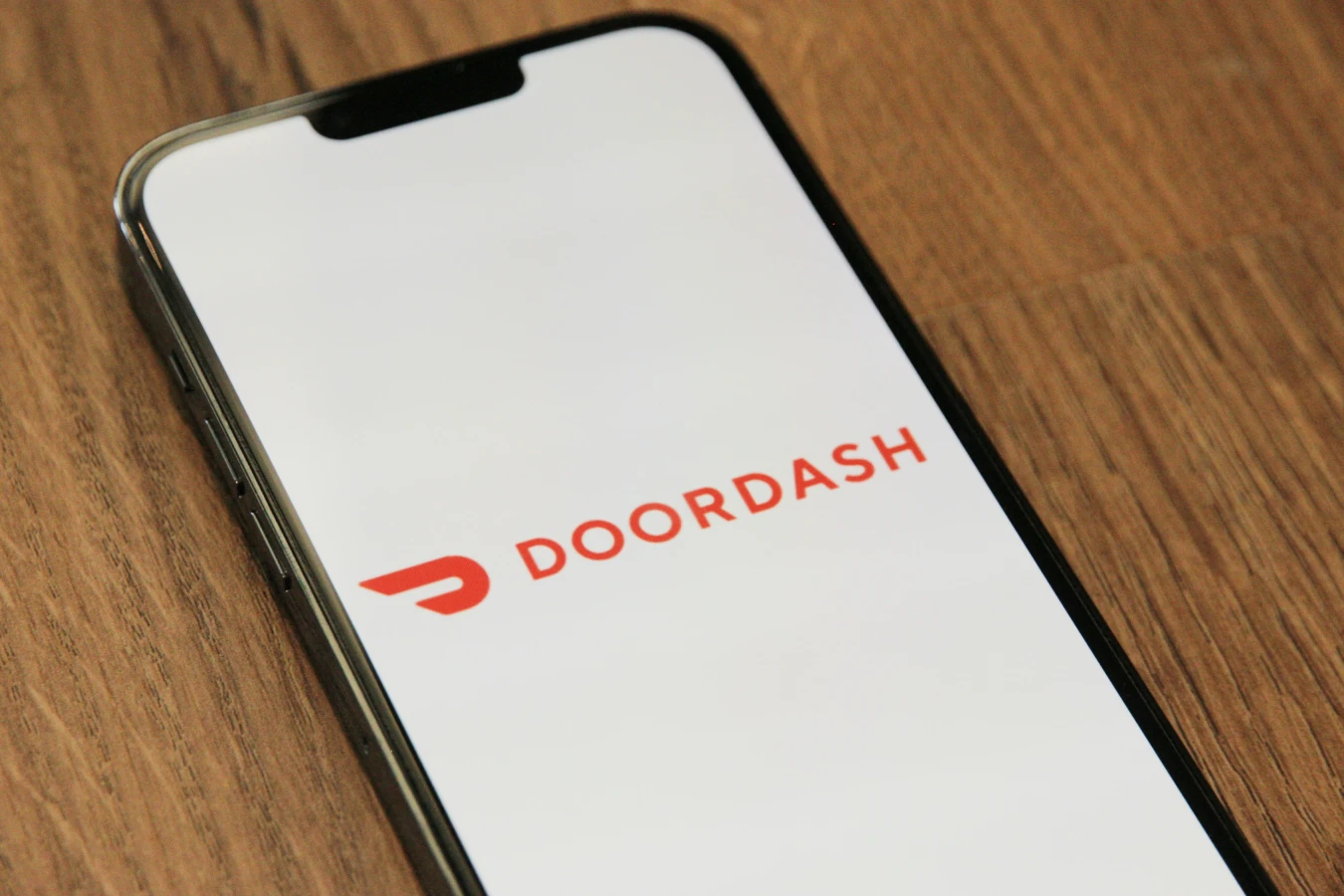
Resources
- Connect with Ashwin Kamlani on LinkedIn.
- Learn more about JUICER.
- Listen to our other episode with Carl Orsbourn, COO at JUICER around data-driven decisions for boosting your local marketing.
Other shout-outs
- Drew Patterson — Co-Founder of JUICER
- Dan Shapero — COO of LinkedIn for inspiring Ashwin to share his own stories on social media.
- Bartaco — A JUICER customer who is seeing massive incremental revenue with dynamic pricing on third-party channels.
Transcript
Justin Ulrich
What’s up everyone, and welcome to the Local Marketing Lab, where you get real-world insights from industry pros to help you drive local revenue and local for growth. This podcast is brought to you by Evocalize – digital marketing tools powered by local data that automatically work where and when your locations need it most. Learn more at evocalize.com.
What’s up? And welcome to the Local Marketing Lab. Joining us in the lab today is a guest with over 25 years in the hospitality space. He’s been to 62 countries, was fired from his second job, and once asked out Drew Barrymore. He’s the co-founder and CEO of JUICER, Ashwin Kamlani. Welcome to the lab, my friend.
Ashwin Kamlani
Thank you very much. It’s great to be here.
Justin Ulrich
You bet. Before we get into anything thing, when I was reading your facts that you sent over, the Drew Barrymore thing, I think is the one thing that probably listeners want to hear the most. What happened with that?
Ashwin Kamlani
It was the year 1999. I was working for Accenture at the time. And back then, the big thing was like this Y2K problem, right? So all these companies trying to figure that out. And I’d gone to this wedding of a friend of mine in New Hampshire. Can’t remember exactly where it was, but apparently Adam Sandler lives there.
And so I remember I was waiting for my US Airways flight back from this place in New Hampshire back to New York. And I was sitting in the waiting area, just minding my own business, and all of a sudden I heard all the people that work for the airline saying, oh, it’s such an honor to meet you, you know. I love your work. And I turn around, like, who is that?
And I turn around and Drew Barrymore. I’m like, oh, my God, that’s crazy. Like, Drew Barrymore is going to be on my flight. Well, sure enough, we get on the plane, one of these little dinky propeller planes, and it was almost empty. There were only one or two people in each row. And as it turns out, she was in my row. There was nobody next to me. And then she was on the other side of the plane at the window.
And I was like, you know what? I’m not going to do anything. I’m not going to say anything. Like, I don’t want to be that guy. Just play cool, whatever. But then as we were landing into New York, it got really bumpy. And I remember she looked over at me and she was just kind of like, giggling because out of nervousness. I said, well, you better hope we don’t go down because you’re in emergency exit. You’re going to have to help everybody get off planes.
And she kind of laughed and we started just chitchatting. And so she, you know, what do you do? And I said, oh, I work for this company called back then, it was Anderson Consulting. So I was like, oh, I work for this company, Anderson Consulting. You ever heard of that? No. Never heard of that. And I’m like, how do I explain it? It’s some…it’s computer stuff. And I’m like, oh, my God, you just met Drew Barrymore. She asked you what you do, and your best answer was computer stuff, like, way to go.
But she was super nice and pretended to kind of be interested. And I was explaining to her this Y2K problem, which I think she actually found it kind of interesting. And again, I was like, don’t do anything stupid. Just keep it light. And then as we were getting off the plane, I’m one of these people that when I’m confronted with these scenarios, I just convinced myself that you will never have a chance like this ever again in your life.
You’re probably going to go down in flames, but you’ll be thinking for the rest of your life, what if you just took the chance? Honestly, I didn’t have any other intentions. I just thought, how cool would it be to hang out with Drew Barrymore? Just have a drink or go out to dinner? And so I said to her, hey, look, I know people probably do this to you all the time, and I really don’t mean anything by it. I just think it would be so great to learn, learn a little more about you.
If you’re in New York, why don’t we meet up just for drink or for dinner or whatever? And she was like, I just got out of a relationship with somebody, and I’m not really in the mood to kind of socialize. But she’s like, why don’t you give me my number? Why don’t you give me your number, and I’ll let you know if I change my mind? So I was like, it was so nice of her to be cool about it, but of course, I never heard from her again. She must have lost the number.
Justin Ulrich
That’s what happened. It got washed in the dryer.
Ashwin Kamlani
That’s right.
Justin Ulrich
She was trying to unfold it, and she only had four of the numbers.
Ashwin Kamlani
Oh, yeah, that’s right.
Justin Ulrich
He did computers.
Well, it seems like, obviously, you’ve done well with computers, right? You’ve started a few companies. And now why don’t you tell us a little bit about JUICER and what JUICER does with computers.
Ashwin Kamlani
Yeah, for sure. So, background is hotels. After I asked out Drew Berrymore, I decided to get into the hotel industry. And I got into the hotel industry right after September 11. And it was the time when all of the online travel agencies were helping hotels with a desperate situation. But also creating a lot of chaos and confusion.
So I had the benefit of getting into the industry right at that time with a tech background and so I kind of became an industry expert on how to deal with all these digital channels. And so fast forward, I ended up becoming the global head of ecommerce for that big hotel company, ended up starting my own business to help other hotel companies do the same.
And two and a half years ago, decided to create JUICER with my co-founder, Drew Patterson, who has a much more stellar background than I have. And we were just looking at the restaurant space and realizing that third party delivery was creating a very similar ecosystem to what we saw in hotels where restaurants were overwhelmed with all the technology, paying high commissions, not getting any customer data.
And so it was kind of like out of sight, out of mind. The more we talked to restaurants, it seemed like it was just, I’m going to set my prices there high enough to offset the commissions and then just kind of forget about it. And with our experience from the hotel industry, we knew that there was a lucrative opportunity to get a lot more revenue out of those channels with a data-driven pricing approach.
And so we built a team, built the product and were lucky enough to find a handful of forward-thinking restaurant groups that believed in us and decided to give us a chance. And the results became very clear. And from then, it’s just been crazy. That’s how we got started.
Justin Ulrich
Yeah, you guys have been a rocket ship. I mean, just watching. What I like about what you do, Ashwin, is you build in public, so you tell a lot of your story as it happens. And it’s really cool. It gives from a branding perspective and from a marketer’s point of view, it gives solid insight into the process, but also gets the viewer to kind of engage with you in a level that’s a lot deeper than otherwise would with branded content.
Ashwin Kamlani
I really appreciate that. You now, with my last company, Regatta Travel Solutions, that’s the way we operated. But back then there wasn’t a social media. I mean, there was, but I guess I just didn’t think about using a social media platform to operate that way. But with our customers, that’s the way we were. We told them exactly what was happening with our business, what we were thinking about building where we screwed up.
Oh, we promised you this thing for March. But listen, we have this other idea that’s going to get pushed to December and our customers really appreciated that about us. When we told them that we launched a feature that just didn’t work and we were just going to kill it. We just told everybody, and we got a lot of feedback that that’s why they loved doing business with us.
And a lot of the people that worked with me back then are now part of the JUICER team years later, that company was started in 2010. I could have a whole webinar to talk about the team. The team is just amazing. And I have people working with us that I worked with at Meliá back in 2005, and then people at Regatta who worked with me back in 2010, and then people that I met in the company that acquired us, most of the people around the table I’ve worked with in some capacity or the other. But I digress.
Justin Ulrich
Yeah.
Ashwin Kamlani
The point of the story is, when we started JUICER, I thought to myself, you know what, I had learned about this storytelling method of, you know video from Dan Shapero, who’s the COO of LinkedIn, and I saw the very first one he ever did, and I thought, I love that. I’m going to do it. Even before we started JUICER, I was doing it. And then when we started the company, I thought, you know what?
I’m going to tell our story through these videos. The good, the bad, everything. And it’s funny, I was just thinking this morning, I got an email from one of our investors, and he asked me about the recent video I posted where I announced that we signed one of the largest restaurant groups in the world. And he was really cool about it. But I kind of had to wonder to myself, I wonder if my investors get annoyed that the world finds out about this stuff at the same time that they do.
I didn’t get that sense from his email, but it just kind of hit me this morning. I was wondering if. But I think it’s worked really well for us. To your point, I get really good feedback about the content and the transparency and the openness, and I think in the restaurant space in particular, it’s refreshing. I think it’s refreshing for the restaurants, and I think it’s appreciated.
Justin Ulrich
Yeah, well, at least you’re getting out there and telling your story. They may hear about it at the same time, but there’s other companies who they’re not touting their success in the way that you do. Like, it’s humble, it’s organic, but that drives value in the business, right? To know that you’ve signed, like, the largest group in the world. What did you say? 20,000 locations?
Ashwin Kamlani
Yeah. Worldwide, they have more than 20,000 locations.
Justin Ulrich
Yeah. Jeez Louise. Can you tell listeners a little bit what you do at a local level? How you help take data from a location basis and inform pricing?
Ashwin Kamlani
Yeah, for sure. That’s something that we have invested in very heavily. And again, it’s because when we started the company, we realized that restaurant groups, for the most part, were painting with a pretty broad brush. And so some restaurant groups were pricing differently by location, others weren’t.
And when we started to suggest the idea of pricing not only by location, but by channel and optimizing at a menu item level per hour, restaurants were kind of like, that’s a little scary, but I like it. Let’s try it. As long as it’s limited to third party delivery. And so that’s an important point, which is that we started out with third-party delivery because those channels created an ecosystem where dynamic pricing could be possible.
And that’s because the consumer there is trained that prices are higher and they’re okay with it as long as it’s reasonable, and that prices can fluctuate. What do I mean by that? I mean that you could go into Doordash or Uber and order something on a Tuesday and then order the same exact thing on a Friday, and it might be more expensive, and that’s because delivery fees fluctuate and things like that.
But the consumer is not doing the analysis to figure out exactly why it’s more expensive. They’re just getting to the checkout screen and saying, am I willing to pay for this or not? That created the opportunity for us to work on behalf of the restaurants and say to the restaurants, listen, that is a channel that you are largely ignoring, but it is clear that the consumer is willing to pay more when things are busy.
Now, if you don’t have the manpower, the knowledge, the ability to analyze the data or the technology to take advantage of that, let us come in and take that over for you. Sorry. This is another important point, is that we really come in and do everything. We’re just like. JUICER’s approach is you don’t even have to think about this anymore. We’re going to analyze the data. We’re going to come up with the new strategy. We’re going to implement the prices, monitor the ongoing sales, optimize those regularly, and implement and just keep tracking.
And all you have to do is read the reports about how well it’s going. So, getting back to your question about localization, we started out by looking at how to price at each location, but it’s amazing how much variability there is in consumer behavior, even within a relatively small radius. So I shouldn’t really mention names, but I’ll give you an example of a group we work with where we’ve had a lot of success optimizing modifiers and toppings.
And in one location, it seemed that steak was a more popular modifier versus another location where shrimp was a more popular modifier. But, they hadn’t thought about pricing based on the popularity of those modifiers at those different locations. And so we tackled that head on and it worked beautifully. So that’s one aspect of what we do locally. The other thing that, frankly, we haven’t really talked about much publicly, but we’re going to very soon.
Justin Ulrich
Do your investors know?
Ashwin Kamlani
To some degree.
Justin Ulrich
They’re going to know now?
Ashwin Kamlani
To some degree, yes. Send them an email tonight before you publish your first. Yeah, especially now that the market has shifted. And last year, the first half was about inflation and we had a bit of a tailwind because restaurants were saying, yeah, my food cost is going up and I’m going to increase prices.
So if JUICER can come in and help me figure out how much to increase my prices, then that’s really valuable. But that was kind of a nice-to-have. Now that there’s softness in the market and there’s a lot of anxiety and concern on part of the restaurants of, wait a minute, maybe I’ve taken too much price and maybe I need to think about value and what’s the price sensitivity of my customer and how do I figure that out? Right. That’s when it becomes a need-to-have.
And so the tailwind has just accelerated, particularly through Q4 and now. So all that to say that the pricing environment has become extremely complicated. You have a situation in Seattle where they’ve passed new laws to make third-party delivery unaffordable. You have a situation in California where minimum wage laws have gone into effect and everybody’s dealing with crunch in terms of margins, and everybody’s watching each other to figure out who’s going to flinch first.
And so one of the things we’ve invested really heavily in is competitive intelligence. It’s something that we’ve been doing from the beginning, but now we’ve taken it to a whole new level where we can look at every single store, compare every single menu item, how it stacks up, alert our customers when something changes that they should be aware of.
And we’re even using AI to break down digital coupons, special offers bundles and things like that. Right? So if Domino’s Pizza is offering a Super Sunday special with three large pepperoni pizzas, a two liter of Coke, and the breadsticks for $24.99, we’re using AI to grab all that data, break it down, price it according to market, and then basically evaluate the delta between what the retail price is and what the discounted price is.
Because this is something that’s never been done before. And so this is localized pricing and competitive intelligence in a way that the industry has never seen.
Justin Ulrich
So if I’m hearing this correctly, you’re saying that if I get that combo from Domino’s, it’ll tell the consumer how much they’d be paying for it somewhere else?
Ashwin Kamlani
No, they get a better deal. We are a B2B company, right? We’re not doing anything that’s consumer facing. What I’m saying is if you own a mom and pop pizza shop, right, or a small pizza chain, and you’re worried about Domino’s stealing market share. In the past, what they would do is every once in a while someone would go into Dominos.com or look at the app and take a look at their menu prices, and maybe once in a while they could look at the bundles and the offers they were offering.
But it was pretty difficult and a scalable way to really measure real time what that bundle or value really value meal was. Again, if you own a chain of a couple of hundred pizza shops, or even 1000 pizza shops or 10,000, 20,000, it might be really interesting for you to understand how all of these different offers in the market play a role.
What the value of those offers are, how they’re changing, how they’re trending, how that positions you in your local market. Now that consumer is getting more price sensitive and they’re kind of making decisions around where the best deal is. This is critical information that has just never been able to be analyzed in this way before.
Justin Ulrich
Yeah, no, that makes total sense. It’s really interesting to think, like when you talk and we do the same thing where we help multilocation businesses do paid marketing at scale. It’s like when you get into past 100, you’re in 1000 locations. You said 10,000 locations. It’s like that is such a daunting task unless you have tools that automatically do it for you, and especially like yours is backed by AI.
I don’t know how anyone would be able to crank through that because it’s like painting the Golden Gate bridge. Once you’re done, you got to start over again. It’s like, how do you do it in real time without a tool?
Ashwin Kamlani
The use case you just suggested is a perfect one. Imagine you’re a franchisor and you’ve got whatever thousands of restaurants out there, and one of your stores calls you and says, hey, look, I’m thinking about doing a local marketing campaign in social media. Right? Can you help me come up with a good offer that would work well?
Now we have the capability to tell that franchisor, hey, here’s a snapshot of that particular store. Here’s what’s happening right around them. Here’s what’s happening with the competitors around the corner from them. These are the offers they have in the market. This is how your current menu stacks up against those offers.
And so now you’re armed with a level of local competitive intelligence that you never had before, and you can make your franchisees much happier with recommendations and insight that would kind of blow their minds, to be honest, because there’s always been a bit of a friction where the local franchisees are like those guys at corporate. They don’t understand my local market. I’m going to do my own thing. Right, and we’re able to change that now.
Justin Ulrich
Exactly. So you can do that at scale. And it sounds like you could have dynamic offer or different offers in individual locations based on what’s going on with the competition locally.
Ashwin Kamlani
So that’s where this gets really interesting. Right. And frankly, in conjunction with something that you guys do would be phenomenal. Right. Because now what our customers are asking us to do is to say, okay, listen, we love what you’ve done. You helped us figure out the perfect price increase that’s been really profitable because all that goes straight to the bottom line.
Now you’re helping us get a handle on how we’re positioned locally. Let me be clear. We’re not advocating that restaurants should just always undercut each other. That is not what this is about. This is about understanding where you fit in your local market and making sure that you’re maintaining that position.
Justin Ulrich
Yeah. And making informed and educated decisions based on data.
Ashwin Kamlani
That kind of sums up our company, because what we found when we started the company was that there were a lot of kind of shoot from the hip and gut feeling decisions being made when it came to pricing. Not in all cases. And I have to say that I’ve come across a couple of groups and even franchisees that are quite sophisticated in the way they make pricing decisions.
Now, that being said, they’re still using Excel sheets. And I think there’s an opportunity to really tech enable those processes. But getting back to what you were just talking about, now that the market is shifting and restaurants are saying, now I need to understand what to do. Right. I don’t want to just lower my prices. How do I make sure I’m not losing customers? How do I make sure I’m competitive in the market?
So we’re now playing a role in, well, let’s look at what offer might work. Let’s look at what kind of promotion we should be thinking about doing. And I think that at a localized level combined with your company could be really interesting.
Justin Ulrich
Yeah, 100%. Once you get input from your tool as to what offer you should be offering, we could have a program that’s automatically, it’s just always live and it dynamically updates based on the data that you’re feeding from your system. It’s an incredible use case.
Ashwin Kamlani
Yeah, that’s exactly right.
Justin Ulrich
I do want to switch gears just a little bit and ask. I’ve been in a couple of conversations where folks talk about, oh, that surge pricing. Surge pricing is terrible. They don’t want to see, like, big shifts in pricing. But I did see a post that you put out there that was just marginal. The difference. Would you want to touch on that just a little bit, the difference between surge pricing and what you guys do?
Ashwin Kamlani
Yeah, I would love to. And during my first company, Regatta Travel Solutions, we had a moment where our biggest customer, it was a big hotel group, one of the largest in Mexico. They split into two companies and we had both of them for a while, but then one of them was forced to switch off to another system and overnight we lost a big chunk of revenue.
So I started driving for Uber just to kind of supplement my own income and stop paying myself you know to keep the company alive. Anyway, super interesting experience. And I was in Charlotetville, Virginia, which is a university town, and Uber had just started, so everybody at the university knew about Uber, but there were very few drivers. So there was always surge pricing, which was great for me as a driver.
But every once in a while, people would be out late drinking on a Friday, Saturday night, and I’d pick people up and I’d go drop them off. And on a ride that would normally cost $10, upon dropping them off, they realized it cost them $40. People got really angry, and they would yell at me as if I was the one ripping them off. Right. And in their drunken super, they were just like, yeah, 4X, whatever, click, I want my ride.
But that’s surge pricing is, you know what, there’s a lot of demand and there’s not enough supply, and so you’re going to pay a lot more than usual. You’ve got to opt into that. But you’re in New York and it’s raining. You got to get to the airport. You don’t have a lot of choice.
So that’s how I would characterize surge pricing, and I do not think there’s a place in the restaurant industry for surge pricing. When we look at pricing in third-party delivery, we work in very narrow margins and we agree with our customers in advance on what that window is going to look like. At most, it’s probably 15% below or above current menu pricing.
The only time we would go, or let’s say, exceed that window is if we see an opportunity to do so. We would always work with our customer to make sure that they are on board with that strategy. But it is a pretty narrow window. Now just to give you a real number. Right. So if you’re selling a pizza for $15 or let’s even say $20, 10% difference, you’re talking $2, $1.50, $2. Right.
And in the world of third-party delivery, that is not a price change that’s going to shock the customer and most probably won’t even notice. To date, we have literally had zero consumer complaints because of the work we do. So it’s really important for people to understand that because there is this fear. You’re right, the consumer is never going to accept this.
It’s very important to understand that this is limited to third party delivery, even though as a company we are now evolving beyond third party and restaurants are asking us to help them optimize prices in all their channels. That doesn’t mean it’s going to be dynamic, but things are changing fast. Right.
And so reviewing your prices every six months isn’t enough anymore. Maybe you should be reviewing it every month. Maybe it should be biweekly, at least in digital channels. But dynamic pricing is limited to third-party channels, and it’s within a very narrow margin on the up or downside.
Justin Ulrich
Got you. No, it’s good to clear that up. Did I see, I don’t remember the exact numbers. I remember seeing $100,000 incremental revenue that you brought to per location or something like that.
Ashwin Kamlani
Okay, so first of all, this was bartaco, and they have a total of about 28 locations. And I can’t give an exact number, but it was a lot more than $100,000. All I said was six figures, right? I don’t want to reveal confidential proprietary data.
Justin Ulrich
So $999,999.
Ashwin Kamlani
I got there. Okay, to say six figures, which was great because that’s a substantial number. The important thing to understand, though, about that result is that that was the first year that we were working with them. And so you can imagine that the first six months, we didn’t just go live in 28 locations, we only had five locations. And we also didn’t start with the whole menu. We had a very small subset of the menu, and still we generated that result within twelve.
Justin Ulrich
Incredible.
Ashwin Kamlani
So the number projecting that we’re projecting for 2024 is substantially higher because now we’re rolled out to all locations and dealing with the majority of the menu.
Justin Ulrich
Yeah. And you test and you learn, right? I’m assuming you’re taking those learnings and you’re rolling it out to your other clients, too, so the product only gets better and better.
Ashwin Kamlani
You know what? I’m glad you said that, because that’s not really the case. The idea of using data to test pricing and optimize it can be applied universally, but you can’t take specific learnings from one customer and just apply it to another.
And I want to make that point because it takes us some time when we sign a new contract to get up and running with a customer, and someone might say, well, why can’t you get us up and running in five minutes? Or why can’t you just get us up and running in ten minutes? And the answer is, your restaurant is not a cookie cutter business. Every restaurant is different, and everyone has its different intricacies.
So we take the time to analyze what is happening in every single restaurant, and we combine that with an algorithmic approach. But you can’t just take an off the shelf thing and assume that that’s going to work for every restaurant. I think that would be a big mistake.
Justin Ulrich
Yeah, that’s how ours is. There’s a learning period, for sure. Yeah. So switching gears a little bit, we’ve talked quite a bit about what you guys are doing to change the industry and how you’re trying to revolutionize pricing. So I thought it would be super fitting to kind of throw this into AI and to come up with a picture of you as William Wallace revolutionizing, leading the pricing revolution, I should say.
Ashwin Kamlani
That is hilarious. That is awesome. It’s got to be one of my favorite movies and one of the characters I always looked up to growing up. He fought a difficult battle. Right? I mean, people didn’t believe at first. People turned on him along the way, but in the end, everyone realized, like, man, this guy was onto something. He had it right, and we got to fight for that. So I don’t know.
Justin Ulrich
That’s right.
Ashwin Kamlani
It’s a fitting analogy, I feel. Sounds arrogant to say that, but no, I love it. That’s hilarious.
Justin Ulrich
Well, yeah, I’ll put one on there for you. Well, awesome. Before we let you go, Ashwin, how do folks follow you? How do they follow JUICER?
Ashwin Kamlani
Oh, man. Well, that’s kind of easy, I guess. Just LinkedIn. I would love it if people follow me as I’m telling the story about JUICER. Our team, our story, everything. But also the JUICER homepage. It’s www.juicerpricing.com. Also the JUICER page within LinkedIn. Stay tuned, because we do have a couple of really exciting announcements coming up soon. So, yeah, it would be great if people follow our story. We’d be grateful.
Justin Ulrich
Very cool. Yeah. And as I mentioned earlier, Ashwin does a really good job of building in public, telling the story. It’s compelling content. You also have daily insights, it seems. And you are in some of the best locations in the world. Every video, I’m like, what life is this guy living?
Ashwin Kamlani
Yeah, you know what? That’s a whole long story, which I won’t get into now, but, yes, I believe in living life to the fullest, and that includes spending every day somewhere beautiful.
Justin Ulrich
Very cool. Awesome. Well, I appreciate you joining us today, Ashwin. It was a lot of fun having you in the lab.
Ashwin Kamlani
Thanks for having me. I appreciate it.
Justin Ulrich
You bet.
If you learned something from today’s episode, don’t forget to subscribe on your favorite podcast platform and follow us on LinkedIn and Facebook @Evocalize. That’s Evocalize and on X at Evocalize.
And remember, keep innovating and testing new things. You’ll never know what connects with your customers best unless you try. Until next time. Thanks for listening.
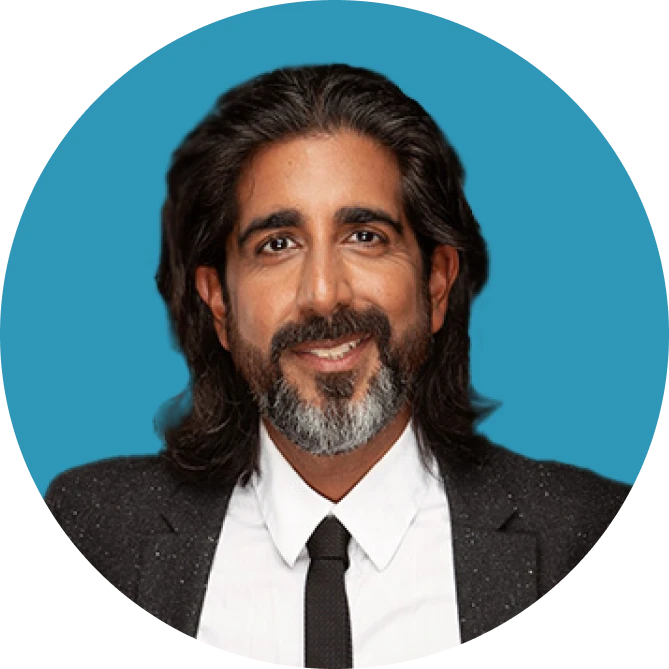
Ashwin Kamlani
Co-Founder & CEO at JUICER
Meet Ashwin Kamlani
Ashwin Kamlani is an accomplished entrepreneur and innovator in the hospitality technology space. Ashwin brings over 25 years of experience to his current venture as Co-Founder and CEO of JUICER, a company helping restaurants optimize revenue through data-driven pricing strategies. Prior to JUICER, Ashwin served as the Global VP of E-Commerce, Loyalty & Distribution for Melia Hotels, spearheading online revenue growth to over 250 million Euros. He also founded his own successful firm focused on e-commerce consulting for major hotel brands. As a leader, he focuses on building transparent, trust-based companies and tells JUICER’s origin story through vulnerable storytelling on platforms like LinkedIn.

Justin Ulrich
VP of Marketing at Evocalize
Meet the host
Justin is a seasoned marketing leader known for his creative expertise and innovative go-to-market strategies. With vast experience spanning both B2B and B2C landscapes, Justin has made his mark across a spectrum of industries including software, POS, restaurant, real estate, franchise, home services, telecom, and more.
Justin’s career is steeped in transformative strategies and impactful initiatives. With specialties ranging from channel marketing and brand management to demand generation, his strategic vision and execution have consistently translated into tangible results.
Empower your franchisees.
Drive real local results.
Not every franchisee on your team is a marketing pro — yet.
Let’s change that. Reach out, and we’ll show you how!







